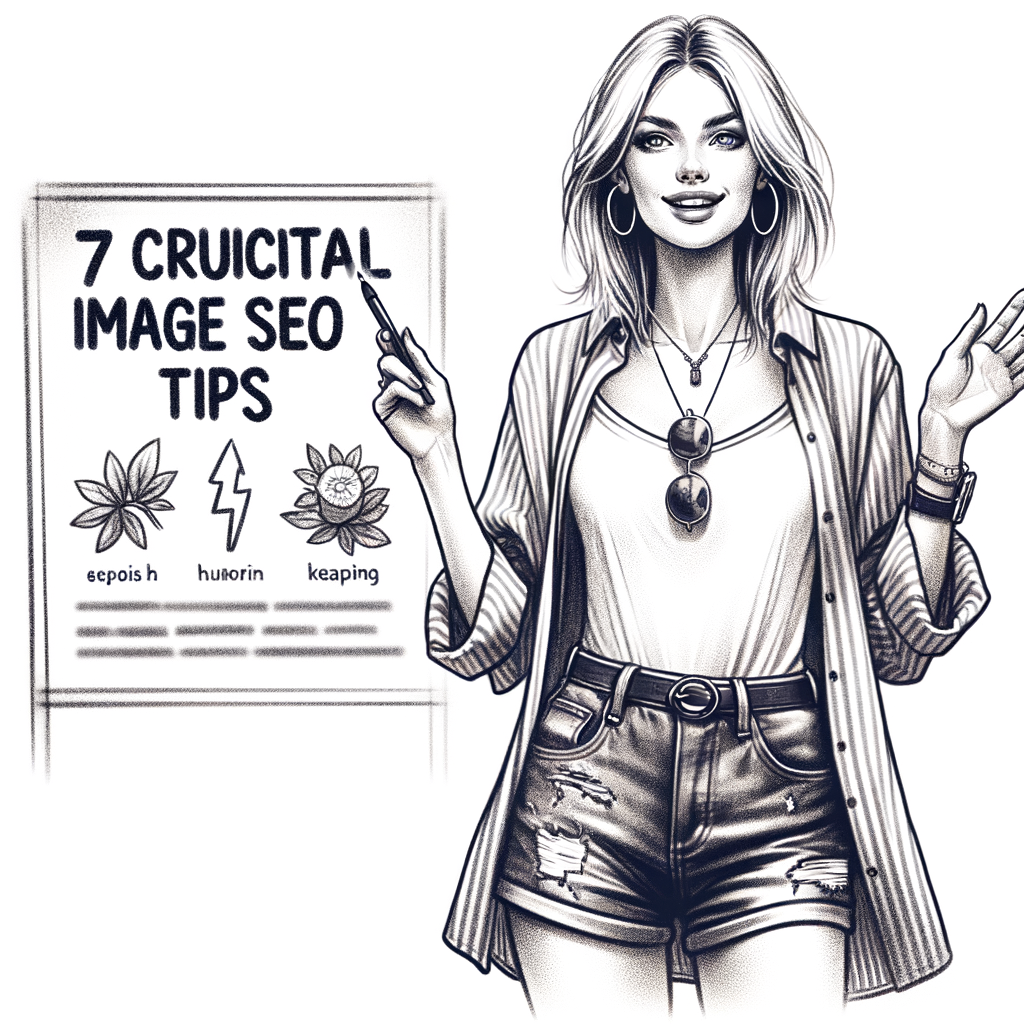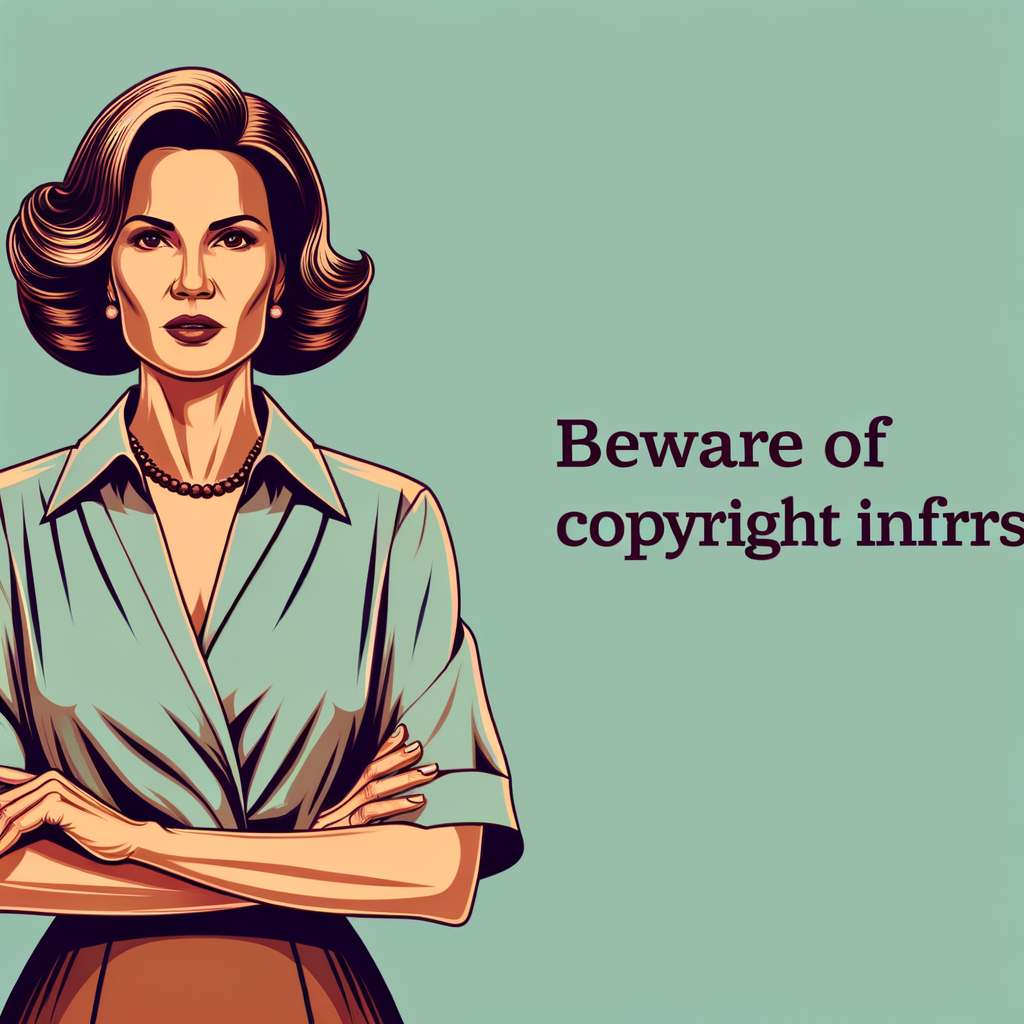
Consider the moment you last added a captivating image to your website. It’s highly likely that you sought out an incredible picture from a vast repository of visual wonders, before gracefully incorporating it into the very essence of your page. Yet, hold your applause for image optimization just yet; there’s more to the story.
In this digital dance of pixels, a heavy bowling ball seems to have found its way onto your site, surreptitiously impeding the graceful flow of page speed. A true conundrum, indeed! And to add to the mystery, search engines are left in the dark, unable to decipher the meaning of your images without a guiding light – the illustrious alt text.
Fear not, intrepid website creators, for there are secrets to unlock! Let us embark on an enchanting journey to discover the art of image optimization, where speed and accessibility intertwine like magic, bringing joy to both visitors and search engines alike. Embrace the wonders of creativity, and let your visuals traverse the digital realm unhindered!
Let’s embark on a journey of transformation.
Within the expansive domain of the digital landscape, a notable proportion—exceeding 20% with precision—of online searches conducted in the United States converge upon the captivating expanse known as Google Images. This intriguing revelation emanates from the venerable repository of data provided by Jumpshot in 2018. Both seasoned practitioners of Search Engine Optimization (SEO) and burgeoning initiates alike are cognizant of the mystical essence concealed within the craft of image optimization for web platforms. This practice, replete with profound significance and potential rewards, constitutes a veritable cornerstone in the pursuit of digital prominence and visibility.
In the domain of real estate, Tom Philipenko, a distinguished authority revered for his profound insights into property dynamics, orchestrated a remarkable achievement. Leveraging his expertise in image alt tags, image compression techniques, and other strategic SEO methodologies, he orchestrated a surge of 250,872 visits to his platform. His adept manipulation of these optimization tactics resembled the unveiling of a coveted treasure trove, unlocking the latent potential of visual assets that might otherwise remain untapped and squandered.
It’s akin to a whimsical encounter with the mystical search engine spirits, who offer you a delightful treat, like a mouthwatering Oreo. Yet, the true magic happens when you seize the opportunity to dip that Oreo into a river of milk, transforming it into a sublime delicacy that transcends the ordinary. Similarly, image optimization is the key that unlocks the full potential of your digital kingdom, enhancing its allure and making it irresistible to all who wander the digital realms.
So, let us embark on this enchanting journey together, where we shall uncover the secrets of image optimization and sprinkle our digital endeavors with stardust, creating an engaging and captivating experience for all who dare to venture into our realm. As we embrace the spirit of creativity and innovation, our digital domain shall become a treasure trove, a realm of wonder and delight, free from the clutches of copyright claims and open to all who seek to partake in its magic.
Transforming images for online platforms yields numerous advantages, spanning from enhancing user engagement to boosting visibility on search engines, thus driving our journey towards triumph in the digital sphere. What was once considered a supplementary task, image optimization now emerges as a critical element in the intricate web ecosystem. Embrace its potential, for the narrative of image optimization is only beginning, holding the promise of boundless opportunities and successes in the digital landscape.
01. The Right Image Format
Deciphering the diverse landscape of image formats can resemble the intricate process of perusing a menu at a sophisticated cafe. However, prior to incorporating images into your digital projects, it’s imperative to meticulously select the optimal file type to guarantee optimal results.
Amidst the diverse gallery of image formats, the esteemed PNG and JPEG proudly hold their place as the most favored choices for the web.
- PNG: Embodies the essence of pristine image quality, albeit accompanied by a larger file size.
- JPEG: Offers a symphony of adjustable image quality, allowing you to fine-tune the balance between size and visual allure.
- WebP: This enigmatic gem grants you the freedom to choose between lossless or lossy compression, and it stands as the sole image format celebrated by both Chrome and Firefox.
In my professional expertise, I advocate for the underappreciated merits of PNG, a stalwart in the realm of image formatting. Despite its commendable qualities, I frequently find myself converting PNG files into the superior WebP format for optimal performance and efficiency in various digital environments.
Just a word of caution: when incorporating .jpg images within an inline SVG format, tread carefully, as certain indexing challenges may arise within certain systems as Google can’t index these.
So, let your website’s visuals captivate the audience by embracing the perfect image format that complements your artistic vision. Each format has its own unique charm, much like the diverse offerings of a fascinating cafe menu, ready to elevate your digital creations to extraordinary heights!
02. Size Matters — Compress the Image
Oh, behold! Web page woes are akin to an inflated balloon when an uncompressed image finds its way into the mix. Imagine this: search engines staring at your web page, shaking their digital heads like aghast onlookers eyeing a colossal vat of Crisco. Surely, you wouldn’t want that to grace your precious website, would you?
Did you know, as per the HTTP Archive, images devour a staggering 21% of a webpage’s total weight on average?
Fret not, for I offer thee a solution! Before uploading images to your site, I wholeheartedly advise compressing them. An art you can master in Photoshop, or harness the power of TinyPNG, a nifty tool that works wonders. Speaking of WordPress, while TingPNG boasts its own plugin, following two real-world optimization tests, ShortPixel emerges as the definitive victor for both JPG and PNG optimization. Among the contenders for JPG compression on WordPress, notable options include EWWW, TinyPNG, and Smush. For PNG optimization, other viable tools encompass Smush, Imagify, and EWWW.
Suggestion: Mind you, the key lies in finding a plugin that performs image compression externally on their servers, lightening the burden on your own site’s shoulders.
CDN (Content Delivery Network): But wait, there’s more! Take the leap and embrace the marvels of an image CDN (Content Delivery Network) that discerns the device and optimizes the image for seamless delivery. Cloudinary and Imgix, the dynamic duo, beckon your curiosity.
Dare to believe, for Increasingly.com witnessed a phenomenal 33% speed boost, shedding off 2 precious seconds from their load time, all thanks to image compression.
Believe me, the allure of faster page speed is nothing short of irresistible when your images are artfully compressed.
Feeling uncertain about your images’ impact on page speed? Leave it to Google’s enchanting tool, PageSpeed Insights, to enlighten you with its wisdom. Embrace the magic of image compression, and let your web pages soar to new heights of performance and delight!
03. Alt Text — The Game Changer (SEO Advantage)
Alt text, also known as alternative text, serves to describe an image’s appearance or purpose on a webpage. This descriptive text is utilized by screen readers, catering to visually impaired users, and is shown in place of the image if it fails to load. Additionally, search engine bots index alt text to enhance their understanding of your page’s content. These alternatives are sometimes referred to as “alt attributes,” “alt descriptions,” or inaccurately as “alt tags.” Alt text can be incorporated into the HTML code or the relevant field within your CMS (Content Management System).
Practical applications of alt text:
- Incorporating alternative text for images on your website promotes web accessibility.
- Alt attributes enable screen readers to convey image information to those who are completely blind, visually impaired, or unable to view the images.
- If an image file cannot be loaded, alt text takes its place to provide relevant context.
- Alt text enhances image indexing and ranking in image search results for search engine crawlers, as well as provides contextual information about the page’s content.
Alt tags serve as textual alternatives for images in situations where the browser cannot display them correctly. Like the title attribute, the alt attribute provides a description of the image content. When an image fails to load, the alt tag appears in the top left corner of the image box. It is essential to ensure that the alt tags complement the images and maintain their relevance.
Giving due attention to alt tags also plays a vital role in enhancing on-page SEO strategy. When all other optimization aspects are in place, having appropriate alt tags becomes crucial because they allow users to understand the intended content even if the image does not load.
Moreover, incorporating suitable alt tags for your website’s images can significantly improve your website’s search engine rankings by associating relevant keywords with the visuals. Even Google acknowledges the significance of alt text for images.
Furthermore, alt text is mandated under the American Disabilities Act to cater to individuals who cannot view images directly. A descriptive alt text serves as a valuable tool to precisely inform users about the content of the photos, ensuring inclusivity and accessibility. For instance, imagine having a picture of chocolate on your website; a descriptive alt text will enable users to comprehend the image’s subject matter.
04. Add Images to Your SiteMap
When it comes to incorporating images into your sitemap, whether by adding them or generating a new sitemap dedicated to images, it is crucial to ensure their presence for improved search engine crawling and indexing. Consequently, this will lead to heightened site traffic. For WordPress users, plugins like Yoast and RankMath provide suitable sitemap solutions.
05. Take Advantage of Structured Data
Optimize your content by implementing structured data markup for various content types, enabling Google and other search engines to enhance visual outcomes. Through this approach, Google may present your images as enriched results, given the inclusion of structured data.
For instance, by utilizing schema markup on a product page and tagging the image as a product, Google might associate it with a price tag. Search engines bypass the regular algorithm and rely on structured data information to display the most relevant image.
06. Legal — Beware of Copyright Infringements
Recently, the Postal Service faced a $3.5 million lawsuit concerning image copyrights, while Skechers encountered a $2.5 million lawsuit. Using images from providers like Getty, Shutterstock, DepositFiles, or any stock photo source without the appropriate license puts you at risk of costly legal actions.

Be cautious of potential copyright violations as the Digital Millennium Copyright Act (DMCA) may issue notices for any infringements. If a content owner finds their material on your website, they can demand a DMCA Takedown, which must be complied with.
07. The Image File Structure
Google recently made revisions to its Image Guidelines, and one notable revelation from these updates is their utilization of the file path and file name as determinants for image ranking.
To illustrate, consider an e-commerce brand with various products. Rather than storing all product images in a standard /media/ folder, a more effective approach would involve organizing subfolders based on relevant categories such as /hotpants/ or /underwear/.
Leave a Reply